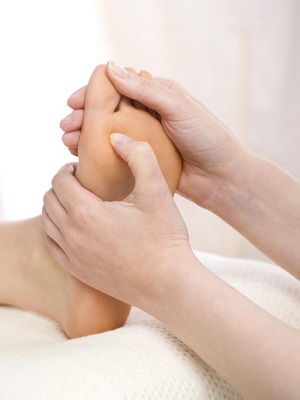 What is reflexology?
What is reflexology?
Reflexology is a form of complementary medicine and involves a method of treatment that applies massage to reflex areas found in the feet and the hands. Most commonly, the feet are used as the areas to be treated.
In the feet, and similarly in the hands, there are reflex areas corresponding to all the parts of the body. These areas are arranged in such a way as to form a map of the body, with the right foot or hand corresponding to the right side of the body and the left foot or hand corresponding to the left side of the body.
By having the whole body represented in the feet and in the hands, the method offers a means of treating the whole body and of treating the body as a whole. This holistic approach is an important factor of natural therapy and allows not only symptoms to be treated but also the causes of symptoms.
The method has been used for several thousands of years and is known to have been practised in a similar manner by the Chinese and the Egyptians.
The benefits
Reflexology does not claim to be a 'cure-all' but many people have found they have been helped by reflexology. Surveys carried out by The British Reflexology Association showed benefits to those presenting with symptoms of stress, insomnia and irritable bowel syndrome.
According to Nicola Hall in her book Reflexology for Women, treatment may help with "a wide range of disorders, including headaches, migraines, sinus congestion, stiffness in the neck and back, digestive problems, hormonal problems".
Most people who have experienced a reflexology session would agree that it is a very relaxing therapy, which may reduce tension and lead to an improved sense of well-being.
